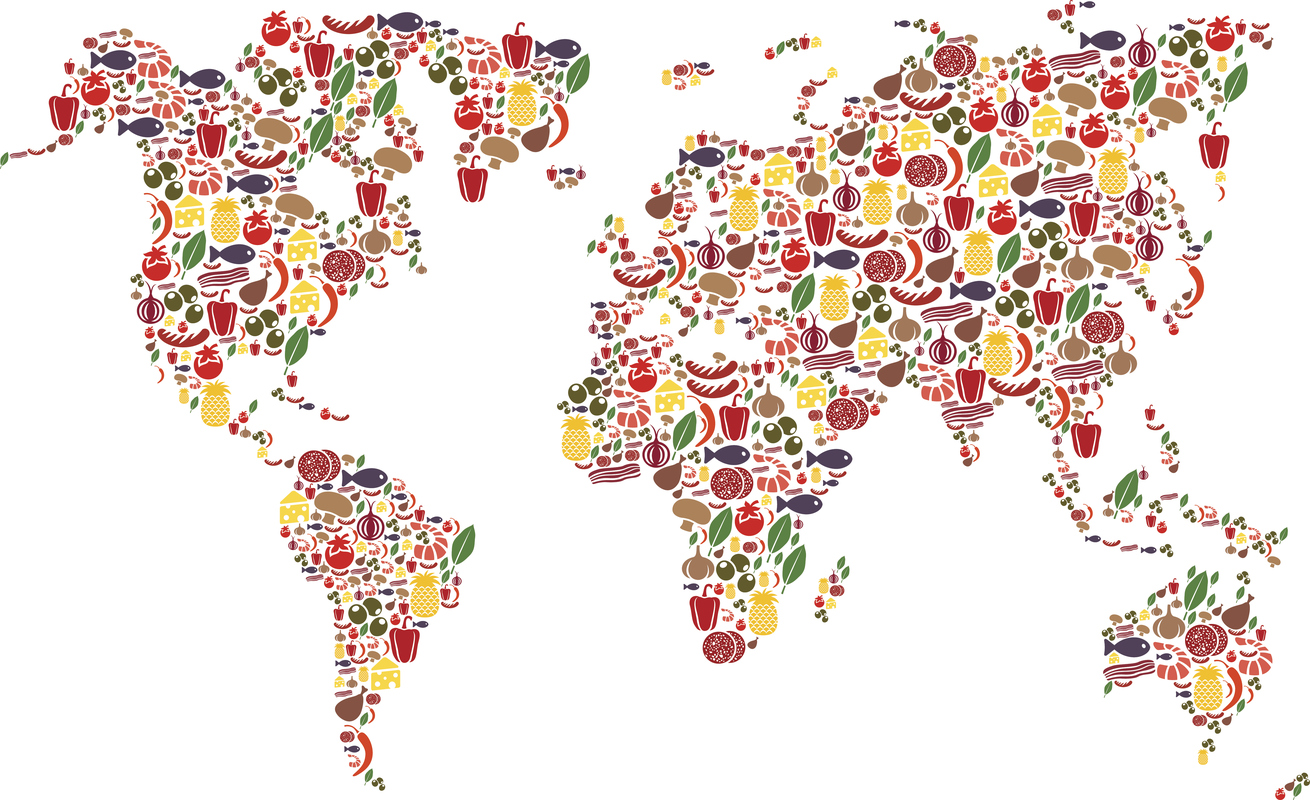An Analysis of the Ingredients Used for an Event
Earlier this year, I attended a meetings industry conference where I was hired to give two presentations on how to manage dietary requests at meetings and events.
The challenges with managing dietary needs can be confusing, frustrating and never ending. We already have a lot on our to do list, so adding a few more ingredients might seem annoying. However, I see those ingredients as opportunities to make attendees feel safe, valued and confident in their experience. I commend the organization for taking steps to meet the needs of their more than 2,000 attendees from around the world.
As with any event and opportunity, we look for ways to do things differently and/or improve upon for the next event. Based on my experience at this event and what I taught to their attendees, here are my suggestions on how the dietary needs management can be improved:
AREA
Online Registration
CIRCUMSTANCE
Asked attendees for their emergency contact. Fabulous!
IMPROVEMENT OPPORTUNITY
- If an attendee says they have food allergy ask if they carry epinephrine with them and where it is
- Have them complete a personal emergency care plan in case they do have a reaction during the event.
- If an attendee says they are diabetic, ask them about their insulin and to complete the emergency care plan as well.
Online Registration
Did not ask if you would be attending the meal functions.
- Since meal functions at the event were not mandatory, require attendees to tell you which meal functions they will attend.
- This not only saves money overall, but helps kitchen staff prepare better for special meals and reduces food waste.
Online Registration
Asked attendees to choose their dietary requirement based on four options (max two) — diabetic, gluten-free, vegetarian and vegan — and to list any food allergies.
- Extend the check box list to include kosher, halal and food allergens.
- Allow for the selection of more than two needs (although this may be a system functionality issue)
- Allow for the write-in of “other” needs
- One attendee has a heart condition that requires him to avoid foods high in vitamin K to avoid a stroke. How was he to communicate his needs.?
- Make the question required for all attendees.
- Ask attendees if they have an allergy if they carry epinephrine with them.
- If attendee clicks food allergy, offer a list of the top 22 allergens regulated by governments around the world. The EU requires labeling on all food served directly to consumers, including events, for 14 foods.
- Open-ended boxes waste time in sorting and filtering. Check boxes help reduce time and clarify needs.
Online Registration
No statement was provided on service levels or responsibilities for managing and acknowledging processes for food allergens.
- Include a statement of responsibility to attendee to inform event host of allergens or other needs.
- Provide information on your processes for working with catering partners in regards to allergens.
- Furnish the name of staff member managing dietary needs in case an issue arises.
Online Registration
There was no communication sent to attendees if they entered a need before the show to explain the meal process at the various food events.
- Include the requested special needs in the attendee confirmation
- Explain the process for obtaining safe meals while onsite.
- Give them a contact person on event staff to talk to if issues arise.
Onsite Registration
Dietary needs cards were placed on a table by the lanyards for anyone to pick up.
There were seven cards to choose from — no dairy, diabetic, no shellfish, gluten-free, allergic to nuts, vegetarian, allergic to ________.
One attendee had to take four cards because of her restrictions.
- Only give cards to attendees with needs.
- Helps reduce the number of onsite special requests.
- Lessens costs for added meals.
- Minimizes waste from uneaten food.
- Provide one personalized card for each person with a summary of their needs on it to reduce confusion with wait staff and culinary team.
- Ensure all needs you asked about in registration have a card.
Onsite Registration
Again, there was no communication given on what to do with the card, when to give it and which meal functions it applied to. Was not even told the cards were present, just happened to find them when getting a lanyard.
- When distributing badges, have onsite staff acknowledge the attendee’s request for a special meal
- Hand them a meal ticket and explain to them the process to use it.
- Provide name of event staff to contact if any issue arises.
Opening Reception
Beautiful buffets. There was labeling for gluten-free and vegetarian, but nothing else. I met a woman allergic to milk and egg. Servers could not tell her what she could eat.
- Have caterer label their items with the allergens they contain – at least the top 8, but preferably the EU list of 14, e.g. contains wheat, egg, milk.
- Continue to label for vegan, vegetarian and gluten-free.
- Ensure staff knows what they are serving, including allergens or knows the staff person who can provide information.
- Have special meals aside for those who cannot eat off the buffet.
Opening Brunch
The printed menu tents with the food icons was great.
I asked for a special plate. The server brought me a plate of green eggs and two other sides. I asked her what it was, but she did not know. I had to talk to five people to find out. The head of catering was the one who finally told me, but she was not too interested in ensuring my safety or happiness.
- Ensure catering staff knows what they are serving, especially the special meals.
- Utilize the dietary needs key at the bottom of the table tent on break buffets as well.
Break Buffets
Buffets were clearly labeled with icons if the items contained milk, eggs or wheat. Fabulous!
There were also logos if something was gluten-free, dairy free or vegetarian.
- Have caterer label their items with the allergens they contain – at least the top 8, but preferably the EU list of 14, e.g. contains wheat, egg, milk.
- Continue to label for vegan, vegetarian and gluten-free.
- Ensure staff knows what they are serving, including allergens or knows the staff person who can provide information.
- Have special meals aside for those who cannot eat off the buffet.
Closing Lunch
The server was quite good at my table, but I was only able to eat the entrée because other courses were not provided for the special meals.
The dessert was pre-plated and no other options were provided.
A friend asked for a plate without shellfish. The server said I’ll get to you when I’m done serving everyone else. She waited 20 minutes.
Another friend asked for a vegetarian/vegan option and the waiter asked if he would like scallops with that?
- Have the menus pre-printed like brunch so attendees know what they’re eating.
- Ensure all meal courses have options available for attendees with dietary restrictions.
- Pre-plated dessert is a waste of food and money, especially for those with dietary restrictions.
- Ensure special meals are served at the same time as others.
- Have a special meals server for a region of the meal function to help the other servers get those meals out for them.
- Ensure the staff is trained on dietary needs and to know the difference.
Specialty Dinners
A planner attendee told me that at one of the invite-only dinners she was rushed to the hospital because the meal she was served had been tainted with pistachios, to which she is highly allergic.
The chef had been told in advance of her allergy, but a step was missed in serving her.
- Confirm procedures a caterer will use to provide safe meals for all attendees.
- Verify allergen-free items are prepared away from other meals and separate equipment is used to prepare and serve.
- Ensure special meals are labeled with allergen information and name of attendee.
- See to it that staff is trained and aware of allergens and how to serve them.
- Provide meal tickets to attendees to help them communicate with wait staff.
Closing Reception
All of the different stations provided great options, except for those with dietary restrictions.
The caterer provided labeling for gluten-free and vegetarian, but nothing else.
Left the conference hungry.
- Have items that meet more than gluten-free and vegetarian guests.
- Label buffet items with allergens included in the dish
- Offer plated meals for those with severe allergies or other medical conditions.
There are many steps to take to ensure you’re providing a safe, delicious and fabulous meal to individuals with dietary needs. Some of these are life-threatening, others are not. No matter, we need to make the effort without affecting the service and quality of the final product.
The last thing you want during the event is for an attendee’s most basic needs not to be met because the food which you ordered and paid for could result in illness, a trip to the hospital or even death.
And, finally, we’re in the business of hospitality. Let’s make sure our attendees have nothing less than an amazing experience.
Thank you again to the organization for finding value in my education in my sessions and allowing me to teach and work with meeting planners, hoteliers, CVBs and caterers on such an important topic.



